React – one of the most popular and powerful tools in a web developer’s toolbox today – is the driving force behind the no-lag user interfaces of giants like Facebook, Netflix, and Instagram. In fact, according to a Stack Overflow survey, React.js is the second most-popular web development framework used by professional developers.
But you don’t need to be a tech wizard to understand its importance.
If you’re a business owner, the technology that powers your digital presence is a crucial decision that can directly impact your success. Choosing the right foundation for your website or app affects everything from user engagement to how easily you can grow and adapt in the future.
In this article, we’ll pull back the curtain and explore why React is a dominant force in web development. We’ll break down, in simple terms, what makes it so special and, more importantly, how leveraging its power can give your business a significant competitive edge.

Get matched with the developer
that is perfect fit for your WordPress or WooCommerce needs.
Start a project
Why is React so popular?
React is the industry standard for building fast, responsive, and engaging user interfaces. Its component-based model ensures your application is not only quick to build but also easy to maintain and scale.
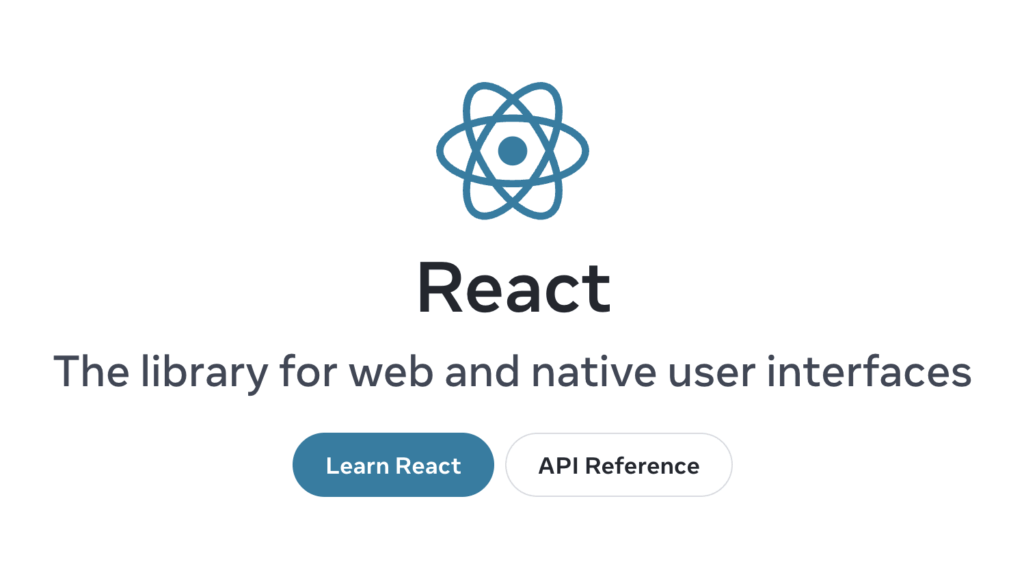
With strong SEO capabilities and cross-platform potential, it’s the expert choice for a high-quality digital presence.
Let’s look in more depth at the key reasons for React’s popularity.
Enhanced performance with Virtual DOM
Think of your website’s structure (the DOM) as a detailed architectural blueprint. Traditionally, making even a small change, like hanging a new picture, required redrawing the entire blueprint—a slow and inefficient process.
React uses a much smarter method: a Virtual DOM, which is a lightweight digital copy of the blueprint. When a change is needed, React updates this fast, temporary copy first. It then instantly compares the copy to the original blueprint, identifies the only thing that changed (the new picture), and tells the browser to update just that single spot.
This minimal approach avoids clunky, full-page reloads. The result is a lightning-fast application that feels incredibly smooth and responsive to your users, significantly improving their satisfaction and engagement.
Component-based architecture
Building a website with React is like building with a set of high-tech blocks. Instead of creating one giant, interconnected piece, you build your user interface out of small, independent, and reusable pieces called components. A component can be anything, such as a search bar, a user profile, a photo gallery, or a simple button.
This modular, “LEGO-style” approach is excellent for several reasons:
- Reusability. Once a developer builds a high-quality “customer review” component, it can be used on every product page across your site, or even in future projects. This principle of “build once, use everywhere” saves an incredible amount of time and effort.
- Maintainability. If a bug appears in your shopping cart, you only need to fix that one “shopping cart” component. Because each component is self-contained, you don’t have to worry about the fix accidentally breaking the navigation menu or any other elements. This makes updates and debugging far simpler and less risky.
- Collaboration. This structure allows a team of developers to work more efficiently. One person can perfect the “login form” while another builds the “header”, all at the same time. This parallel workflow gets the project done much faster.
Accelerated development
Because developers can reuse existing components and trust the efficiency of the update mechanism, they aren’t starting from scratch for every new feature. They can assemble, iterate, and innovate much more quickly.
For you as a business owner, this speed translates directly into a powerful competitive advantage. It means a faster time-to-market for your product and the agility to respond swiftly to customer feedback or changing market demands. This allows your business to evolve and improve continuously without being held back by slow, cumbersome technology.
Cross-platform development with React Native
As your business grows, reaching customers on their phones becomes essential. This often presents a costly dilemma: Do you build an app for Apple’s iOS or Google’s Android first? Traditionally, supporting both required two separate, expensive development projects.
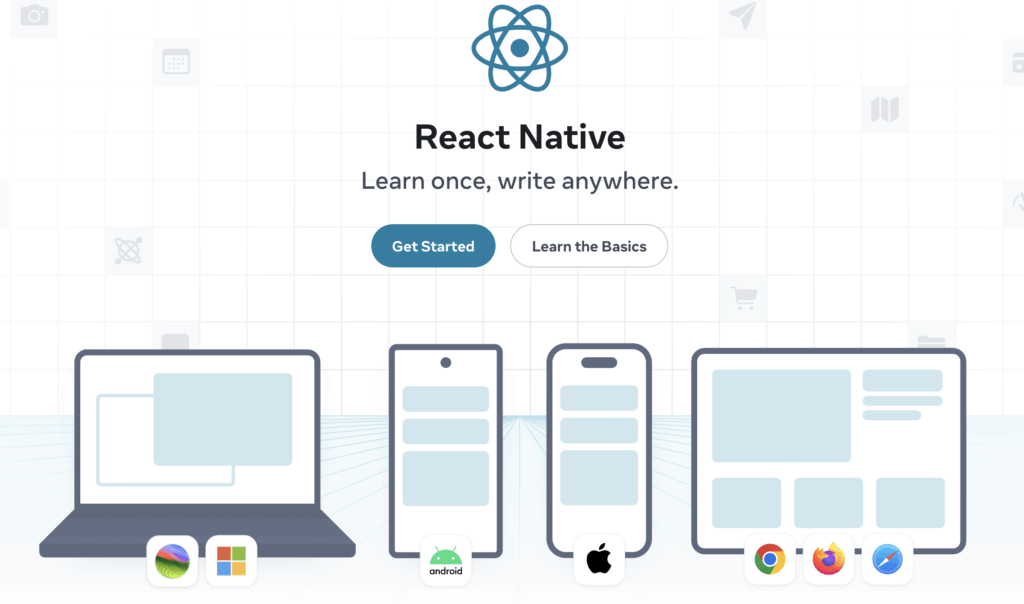
React provides a more efficient solution with React Native, its framework for building mobile applications. It allows developers to apply their existing React skills to create apps that run natively on both iOS and Android devices. This unified approach offers powerful strategic advantages.
- Significant cost savings. Using one codebase and team for mobile platforms significantly cuts development costs compared to building two separate apps.
- Streamlined project management. One core technology for your web, iOS, and Android presence simplifies the entire development lifecycle. It makes your tech stack easier to manage, update, and scale in the future.
- A consistent brand experience. This approach ensures that the core logic and user flow of your application remain consistent across all devices, strengthening your brand identity.
Strong community support
When you choose a technology, you are making a long-term investment. The strength of that investment depends not just on the code itself, but on the network of people who build with it, maintain it, and support it.
React is backed by one of the largest and most active developer communities in the world, with foundational support from Meta (Facebook). This global network provides a safety net and a powerful engine for innovation, offering direct value to your project.
- A vast ecosystem of tools. With thousands of available libraries and tools, developers can quickly and reliably implement complex features like data visualizations and animations, improving product quality.
- Accessible expertise and solutions. Extensive documentation, forums, and tutorials provide developers with a wealth of knowledge to efficiently solve challenges, minimize delays, and maintain high project standards.
- Long-term viability. An active community ensures the technology is constantly being improved, secured, and updated to meet modern demands. This protects your investment from becoming obsolete and ensures your application can evolve for years to come.
SEO-friendly
For your website to rank high on Google, search engines must be able to read its content easily. Some modern applications present a challenge: they send a “recipe” (JavaScript) to the browser and ask it to “cook” the page on the spot. A busy search engine crawler might not wait for the meal to be ready, potentially missing your valuable content.
React solves this with techniques like Server-Side Rendering (SSR). This is like having a chef prepare the full meal before it leaves the kitchen. The server sends a complete, fully-rendered page. When Google arrives, it sees the finished meal instantly, allowing it to easily crawl, index, and rank your content higher, driving more organic traffic to your business.
Rich user interfaces
Think about the best websites and apps you use every day. They feel alive and responsive. Content updates without you having to hit “refresh,” forms give you instant feedback, and navigating the site feels smooth and effortless. This is the power of a rich user interface (UI), and it’s an area where React truly excels.
It combines high-performance rendering with an organized component structure to go far beyond static pages and allow for features like:
- Real-time data feeds that update automatically, like a social media timeline or a stock ticker.
- Interactive dashboards where charts and graphs change instantly as you apply filters.
- Instant form validation that tells you if your chosen username is available as you type.
- Smooth transitions that make moving between pages feel as fluid as a native mobile app.
React helps you design an intuitive and satisfying UI for your users, leading to higher engagement and longer visit times. This ultimately drives conversions and builds customer loyalty by creating a perception of your brand as modern and high-quality.
Notable projects built with React
React isn’t just a tool for small startups; it’s the technology of choice for some of the world’s leading companies, powering applications used by millions of people every day. These businesses have leveraged React and its mobile counterpart, React Native, to solve complex challenges, accelerate growth, and deliver exceptional user experiences.
Here are a few notable examples of React in action.
Discord: Achieving elite performance
Discord, the go-to communication platform for gamers and online communities, built its highly-rated iOS app using React Native. With millions of active users, their primary challenge was ensuring the app remained fast and fluid, even on older devices.
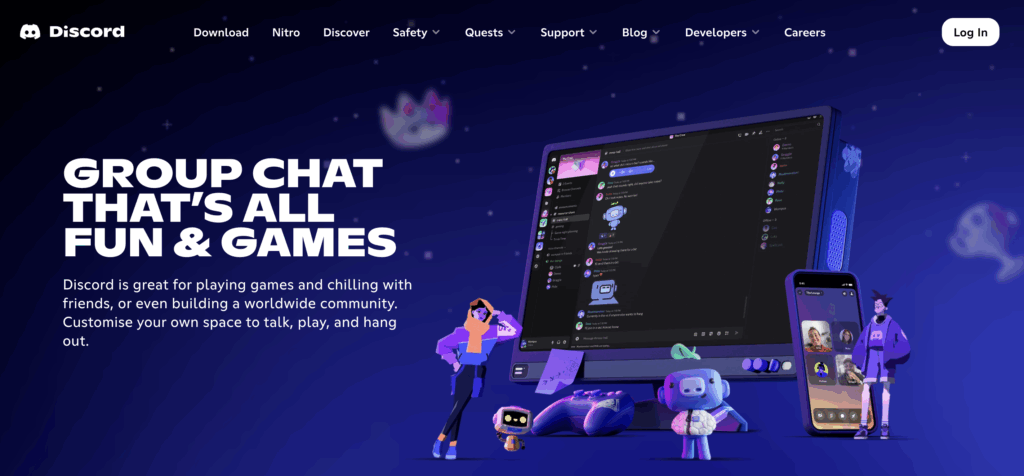
- The challenge. Over time, the team noticed that their app’s performance had declined. The app was becoming sluggish, draining battery life, and couldn’t maintain a smooth 60 frames per second (FPS), which is the standard for a top-tier user experience.
- The React Native solution. Instead of abandoning the technology, a dedicated squad dove deep into optimizing their existing React Native codebase. They tackled everything from how the app handled data to how it rendered long lists of users and channels. They even created their own custom solutions, like a high-speed list component they dubbed <FastList>, to overcome bottlenecks.
- The benefits. The improvement was dramatic. Discord achieved a consistent 60 FPS, significantly reduced battery consumption, and cut the app’s initial load time by an average of two seconds. They accomplished this while maintaining a 99.9% crash-free rate, proving that React Native apps can perform just as well as their native counterparts.
Mercari: Unifying development to scale faster
Mercari, the massive online marketplace, faced a classic “growing pains” problem. Their app was a hybrid of native code (for iOS and Android) and React Native, which created significant inefficiencies for their engineering teams.
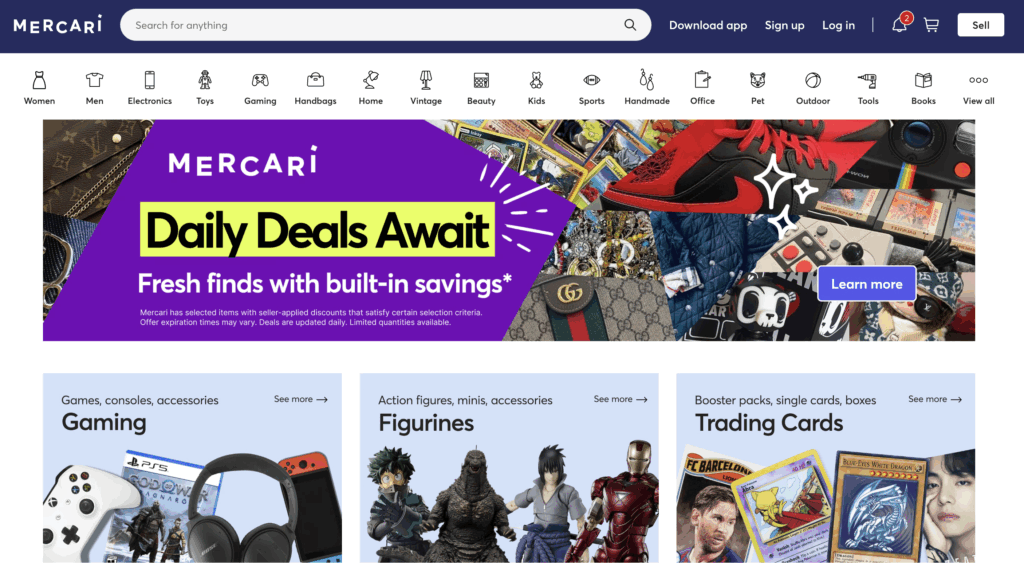
- The challenge. Developing features for both iOS and Android was slow and costly. A feature built for one platform would have to be completely rebuilt for the other, leading to inconsistencies and fragmentation. Maintaining three different codebases (iOS, Android, and React Native) was becoming unsustainable as the business grew.
- The React Native solution. Seeing the productivity gains from their limited use of React Native, Mercari made the bold decision to rewrite their entire mobile app using the framework. This would unify their entire engineering team around a single technology for both platforms.
- The benefits. This strategic shift allowed Mercari to achieve over 95% code shareability between its iOS and Android apps. It empowered a single engineer to deploy features to both platforms simultaneously, drastically improving efficiency and allowing them to iterate on their product much faster to meet customer needs.
Bloomberg: Accelerating time-to-market
When the global financial media giant Bloomberg decided to launch a new consumer mobile app, they needed to do it quickly without compromising on quality or features.
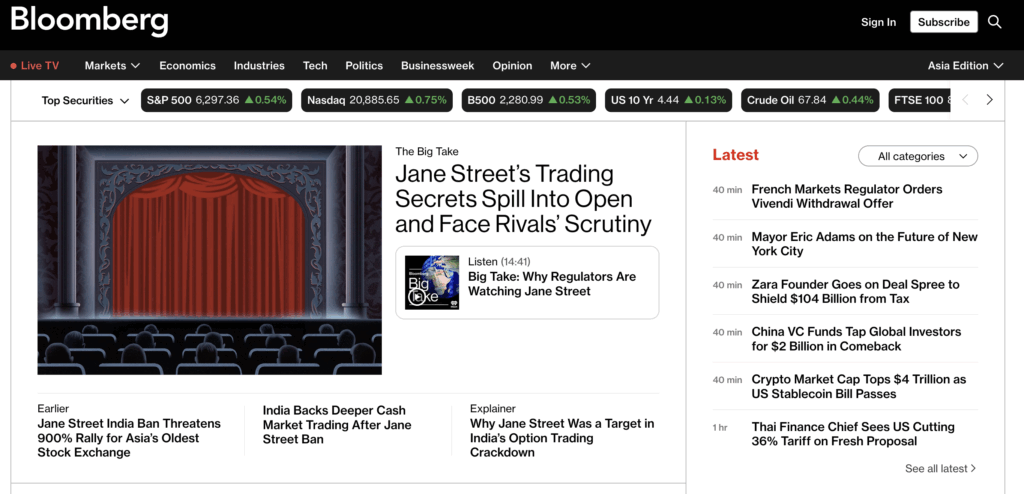
- The challenge. The traditional approach of building separate iOS and Android apps in parallel would have been slow and repetitive, requiring two distinct teams and doubling the work. They needed a way to launch a high-quality, interactive app on both platforms simultaneously.
- The React Native solution. Bloomberg chose React Native to build its new app from the ground up. This allowed a single team of developers to work on features for both iOS and Android at the same time, using one unified codebase.
- The benefits. The results were transformative for their timeline. The Bloomberg team developed the app in just five months – roughly half the time it would have taken using traditional methods. This speed allowed them to get to market faster and gave them the ability to quickly test and release new features, like interactive animations and personalized content feeds.
The long-term benefits of building your project with React
As a business owner, you should care whether your project is built using React, but perhaps not for the deeply technical nuances. Your focus should be on the tangible benefits React brings to your project’s success and your long-term goals. Choosing the right technology is a strategic business decision that impacts your budget, your ability to grow, and your customers’ satisfaction.
Let’s explore what choosing React means for your business in the long run.
Performance and user experience
A modern user expects a fast, butter-smooth digital experience. Delays, stutters, and clunky page reloads can lead to frustration and cause potential customers to leave your site.
Thanks to its smart rendering process, React excels at building incredibly fast and responsive applications. For your business, this translates directly into a smooth, fluid interface that feels professional and effortless to use. This positive experience is key to improving:
- Customer satisfaction and engagement. Happy users stay on your site longer and interact more with your content.
- Conversion rates and retention. A frictionless experience removes barriers, making users more likely to sign up, make a purchase, and return in the future.
- Brand perception. A high-performance website or app signals quality and professionalism, building trust in your brand.
Scalability and future-proofing
Your business isn’t static, and your digital platform shouldn’t be either. As you grow, you’ll need to add new features, expand into new areas, and adapt to changing market demands.
React’s component-based architecture makes your application inherently scalable. This means:
- Your application grows with your business. You can easily add new functionalities over time without requiring a costly and time-consuming rebuild from scratch.
- Your project remains attractive to developers. A well-structured React codebase is easier for new developers to understand and contribute to. This makes it easier to hire talent for future enhancements and reduces long-term maintenance costs.
Cost-effectiveness and maintainability
While the initial development cost of a React project might be comparable to other technologies, React’s architecture is designed for efficiency, leading to significant long-term savings.
The reusability of components means developers don’t have to reinvent the wheel for every new feature. Furthermore, because components are isolated, fixing bugs or making updates is typically faster, cheaper, and less risky. An issue in one part of the application is unlikely to break another. The large, active community also ensures that it’s generally easier and more cost-effective to find skilled developers for ongoing maintenance or future work.
Cross-platform potential
What if you decide to launch a mobile app a year from now? If your website wasn’t built with forward-thinking technology, you might have to start from square one.
React, with its connection to React Native, allows you to use the same core principles and often a significant portion of the same codebase to build native mobile applications for both iOS and Android. Even if a mobile app isn’t in your immediate plans, building your web platform with React keeps that door wide open, potentially saving you substantial development time and money when you do decide to expand to mobile.
Find your ideal React developer with Codeable
Choosing React is a smart move for building a fast, scalable, and future-proof application. But to turn that potential into reality, you need the right technology and the right talent. The success of your project depends on an expert who can leverage React’s full power.
Codeable connects you exclusively with the top percentile of React developers. Every expert on our platform is rigorously vetted for technical mastery and professionalism, ensuring you partner with a developer truly invested in your project’s success and long-term value.
Ready to bring your vision to life?
Post your project on Codeable to get a free, no-obligation estimate from a vetted React expert who can deliver the results your business needs.

 Dream It
Dream It

